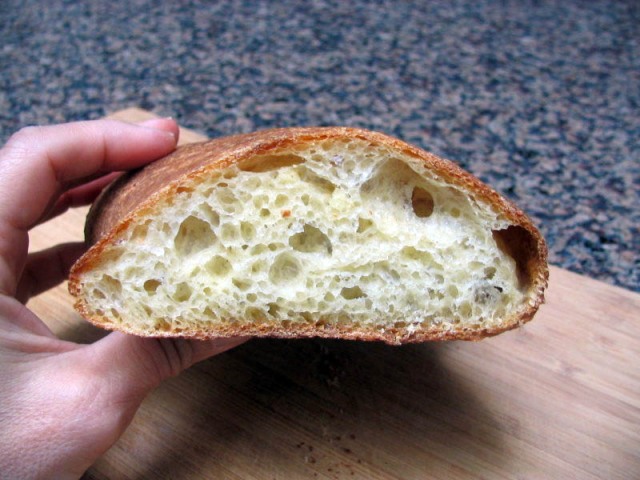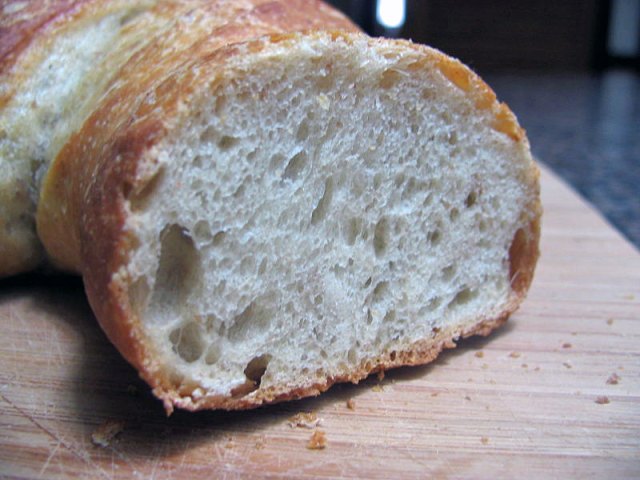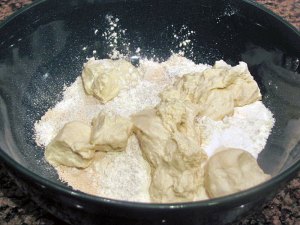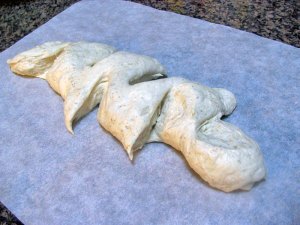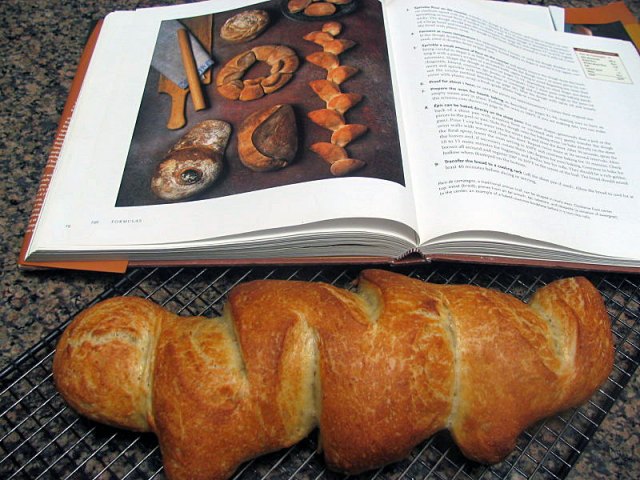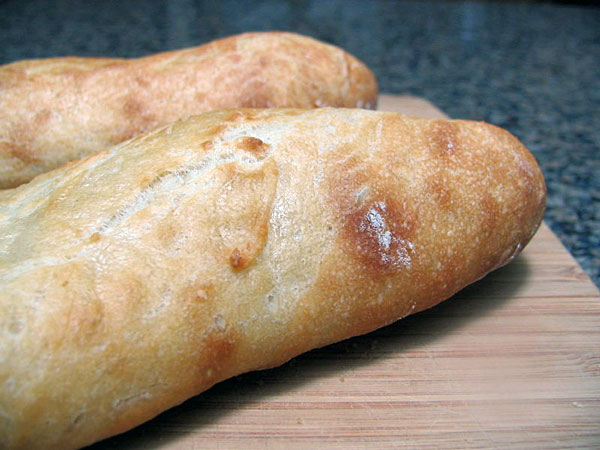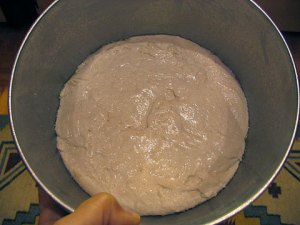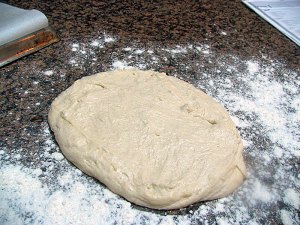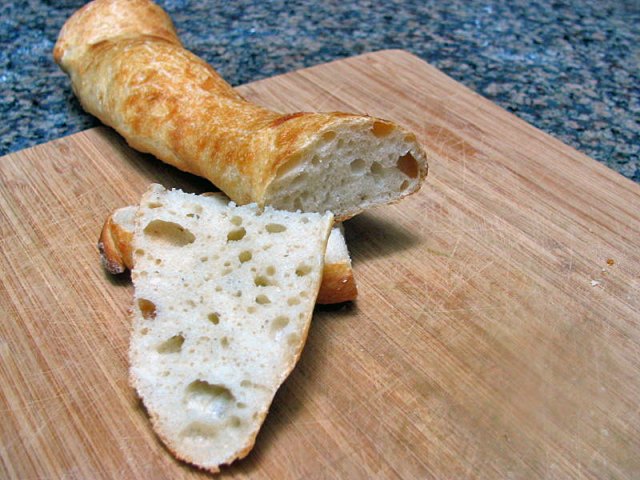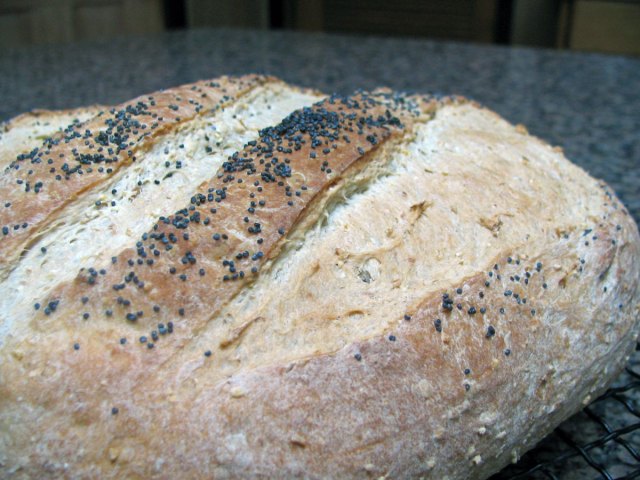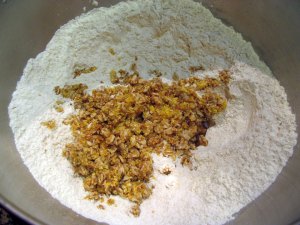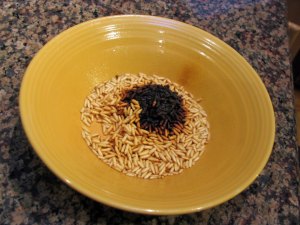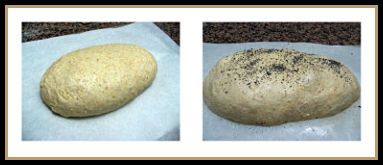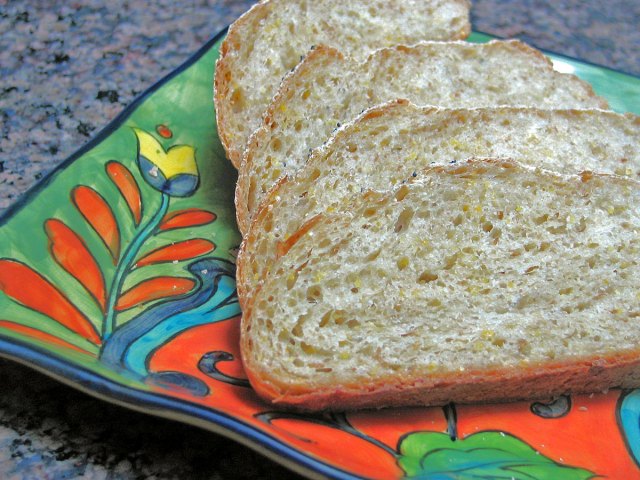Here we are, at bread number 24 of the Bread Baker’s Apprentice Challenge, started by Nicole from “Pinch My Salt“. Read all about it here.
Panettone, the traditional Italian fruit bread, is very popular in two of my former homes, Sao Paulo and Paris, during Christmas. I wish I could say it brings back fond memories of childhood, but the truth is that I never cared for it. In my memory, panettone was a dry, chalky bread with hardened pieces of fruit in the crumb. What can I say? I was a difficult child. 😉
Nevertheless, Peter Reinhart says that this recipe, which is more involved than most, produces the best panettone in the world. I was a bit skeptical, but gathered up all the ingredients and hoped for the best.
Was it good? Oh, YESSS! The best in the world? Well, I haven’t sampled that many, but my husband considers himself a panettone connoisseur, and he and I agreed that this was the best we’ve ever had, by far. The crumb was moist and velvety, with the right amount of fruit and sweetness, plus that unmistakable hint of “fiori di Sicilia“, the extract that gives panettone its characteristic holiday flavor. It was impossible to eat just a single slice of this bread…and we shouldn’t have brought out the butter…in a few minutes nearly half the loaf was gone! The other half will make some graduate students very happy tomorrow!
This is it! The panettone for this year’s holidays!
The recipe needs advance planning, as it uses a wild yeast sponge (mixture of water, flour, and a sourdough starter) as part of the final dough. The fruits soak in rum, orange and fiore di sicilia extracts overnight. The process went smoothly, my loaf is a little shallow because since I didnn’t have a 6-inch pan, mine was 7.5 inches in diameter.
This is the wild yeast sponge ready to go into the dough…. 
Dried fruits soaking in rum, orange and fiore de sicilia extracts
The dough smells wonderful from the very beginning….
Ready to go into the oven…
Just out of the oven…
Check out the panettone posts by other bakers following along the Bread Baker’s Apprentice Challenge:
Oggi, from I Can Do That
Mags, from “The Other Side of Fifty”
TxFarmer, from Sina.blog










